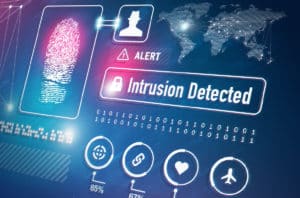A Business Leader’s Guide to Ransomware
This comprehensive ransomware guide will give business leader's a modern and feasible approach to protecting your organization.
Ransomware threats are everywhere. A comprehensive ransomware strategy is necessary for all business leaders to protect their organization from cyberattacks.
There are the perennial threats like phishing and credential theft, which, while extremely easy to prevent with basic cyber hygiene, remain the source of roughly 98% of ransomware attacks – in 2022.
Then, you’ve got the more sophisticated stuff. Think – crypto jacking, fileless attacks, and social engineering. Oh, and sophisticated nation state attacks, targeted hits on major utilities, physical infrastructure, and critical supply chains.
Ransomware “gangs” are launching seriously damaging attacks on big-name orgs from Colonial Pipeline and Accenture to Planned Parenthood and global meat producer, JBS Foods, among countless others.
And, there’s a booming underground economy that’s making it easier – and cheaper – than ever for anyone to wage a pro-grade attack on their target of choice, no tech skills required.
If it sounds scary, that’s because, well, it is scary.
But, we want to be clear – we’re not trying to give you or your IT team nightmares re: the unknown threats (and threat actors) lurking in the shadows of cyberspace.
Our goal for this series is to help business leaders – across every industry – understand the threats their orgs are up against and, hopefully, convince them to care about ransomware enough to take action in fighting it.
We’ll also make the case for modernizing your ransomware strategy with agile-like processes, intelligent solutions, and powerful AI capable of mounting a formidable defense. – and, of course, share some practical advice for actually making it happen.
Here’s a quick peek at the topics we’ll cover:
Ransomware is a form of digital extortion built on the same general model used in physical kidnappings – with criminals targeting data and documents rather than actual humans.
what it is, how it works, and why your business needs to make it an urgent priority. We’ll look at things like different types of attacks, common targets, and the potential impact ransomware can have on your business.
Even with the most robust protections in place, malware can manage to slip into your network and wreak havoc on your business.
Understanding how ransomware attacks work is the first step toward preventing, detecting, and responding to attacks. So, here, our goal is to help you understand the ransomware lifecycle – from initiation to exfiltration, the ransom demand, and beyond. That way, you’ll have a better idea of what you’re up against and, from there, start researching potential security tools, tactics, and partners.
Read the full article to learn how ransomware works, how it spreads, and what malware can do to digital assets, networks, and infrastructure. We’ll also touch on some of the ways these virtual attacks can lead to tangible damage in the physical world.

Ransomware is evolving rapidly, due to increasingly sophisticated and affordable technologies like big data, AI, machine learning, and low-code/no-code development tools. It’s the typical transformation arc we’re watching play out in every industry – only with bad intentions and uniquely terrifying implications.
We’re seeing big changes in the way threat actors operate – high-volume, commodity attacks have been replaced by coordinated attacks on specific targets. Ransomware has become this sort of dark web mega-industry – with specialized talen
t, sophisticated technologies, and affordable kits and components that make it easy for anyone with a few bucks to launch an attack for monetary, political, or even personal gain.
What’s more, digital transformation and the rise of remote work has unlocked even more entry points cyber criminals can exploit. We’re talking – virtual machines, unsecured apps and devices, VPNs, the IoT, and a whole lot more. In this piece, we look at some of the driving forces changing the face of ransomware and disrupting the threat landscape.
Look, ransomware means big trouble for organizations of all shapes and sizes – from large, multinational enterprises to mom-and-pop operations and non-profits. Attacks easily can cause catastrophic damage. We’re talking: major supply chain disruptions, reputational damage, and financial ruin. Data leaks can put customers and partners at risk, while attacks on operational tech and IoT devices have the potential to cause real harm – in the physical world.
What we’re saying is, ransomware attacks represent a total nightmare for businesses and anyone connected to them. This article zooms in on six high-profile attacks and examines how they happened, why, and what lessons you can learn from these worst-case cyber scenarios.
 Any good ransomware protection strategy protects your business from every possible angle.
Any good ransomware protection strategy protects your business from every possible angle.
Now, your primary aim is transforming your digital estate into an impenetrable cyber-fortress. See, you’re trying to build resilience and agility via end-to-end coverage, identity and access management (IAM) protections, cyber-education, and a digital infrastructure designed in such a way that deters would-be threat actors.
But, equally important is building a ransomware protection strategy that goes beyond basic prevention. You’ll want to make sure you’re able to detect attacks as they’re happening – and that you’re prepared to take action.
On top of that, you’ll need to prioritize ongoing investments in continuity, training, and data loss prevention. You’ll need to run regular threat simulations against different scenarios and practice those plays until they’re second nature for everyone in your org. This article looks at six ransomware protection best practices to include in your security strategy. In it, we’ll cover network segmentation, identity, backups, and more.
The question of whether the cloud is “safe” from ransomware or not depends on so many different factors. Think – whether you’re using a unified system or have strong data governance policies in place. Or – whether you’ve got supported apps or bad configurations hidden inside your digital ecosystem that put your business at risk.
Risky or not, however, the cloud has become an essential part of running a business. And as such, debating the issue of cloud safety is pointless.
Instead, the conversation should be about creating the safest possible cloud environment – focusing on establishing end-to-end visibility and using the power of big data, AI, and machine learning to get ahead of threat actors using those same technologies for evil.
In this piece, we shed some light on the biggest ransomware threats lurking in the cloud, bust a few security myths, and share some practical tips for staying safe in this complex new environment.
Microsoft is all-in on security. The company ha
s famously poured billions of dollars into cybersecurity initiatives and, more recently, has joined forces with public and private sector orgs to “disrupt the ransomware economy.”
They’ve also invested heavily in adaptive AI, XDR, and SIEM solutions that span its entire network of apps and services – plus any external or homegrown solutions included in your stack – both on-premises and in the cloud.
This short series takes a deep dive into the Microsoft ecosystem – offering insight into how solutions like Dynamics 365, Azure, the Power Platform, and more protect your data from ransomware and other threats.
 Look, we could talk for days about how the cloud has eclipsed on-premises systems in every regard. But, it’s kind of old news at this point. Most companies know they need to get to the cloud ASAP if they still haven’t completed their migration.
Look, we could talk for days about how the cloud has eclipsed on-premises systems in every regard. But, it’s kind of old news at this point. Most companies know they need to get to the cloud ASAP if they still haven’t completed their migration.
But, the reality is, a lot of companies still rely on legacy systems to carry out their day-to-day operations. And, those companies do need to ensure those systems are secure –whether they’re already in the midst of a migration journey or are still making travel plans.
While there’s a lot of overlap when it comes to protecting on-prem and cloud apps from ransomware, locally-hosted platforms create some additional challenges (and risks) for end-users. This piece offers actionable advice for protecting on-premises Microsoft Dynamics systems from ransomware as you make the journey to the cloud.
Identifying and implementing the right anti-ransomware tools is a time-sensitive matter. You’re racing against the clock to make improvements – before ransomware attackers get the chance to exploit vulnerabilities in your legacy system.
What’s more, already overwhelmed security teams may not have the time to keep up with the latest developments in the ransomware space or the new solutions and vendors taking on these emerging challenges.
At the same time, you can’t rush the research and evaluation process, as rash decisions can leave you even more vulnerable to attack – creating security silos, tracking the wrong metrics, or making it too difficult to respond to incidents in a timely fashion.
In this article, you’ll learn about defining and mapping requirements, evaluating vendors, testing solutions, and more. We’ll also discuss the importance of building a unified security ecosystem that protects your business from ransomware across nine different dimensions – or security pillars – as per the Zero Trust framework.
Ransomware detection tools and best practices are a total game-changer when it comes to protecting your business from incoming threats. Done right, detection allows you to be proactive about fighting ransomware, rather than hoping your defense strategy can handle whatever attackers have in store.
Keep in mind, though, early detection can only get you so far. Unless your org is prepared to snap into action the second a breach is detected, you’re still staring down some pretty terrifying possibilities. Think – data loss, financial damage, harm to your customers and your reputation, legal ramifications, and so on.
Here, we share some practical tips for detecting ransomware attacks early so you can take action before real damage is done. We’ll discuss how to prepare your employees, leverage automation tools, embrace continuous threat monitoring, and more.
You can do everything right when it comes to ransomware prevention and detection and ransomware can still find a way into your system. Ransomware tools and tactics are always evolving, and business leaders must be prepared for the likely reality that they may one day become a victim.
That said, a ransomware attack doesn’t have to be the end of the world. With careful planning, good data, and agile processes in place, orgs can act fast in the face of an attack, limiting potential damage and getting back to “business as usual” ASAP. In this piece, we’ll focus on what happens after “the worst happens,” offering a step-by-step breakdown of the ransomware response and recovery process.
While Zero Trust isn’t the only framework out there, it’s one of the most effective ways to make sure your strategy covers all devices, endpoints, users, and apps in your network – and can adapt to a changing threat landscape in near-real-time.
Per the Zero Trust framework, ransomware protections must be applied holistically. So, you’ll need to establish end-to-end visibility across the entire threat surface first, then make sure you set up your stack so that all solutions are deeply integrated – with each other and the rest of the estate.
That tight integration allows all solutions to work together to prevent, detect, respond, and recover from ransomware attacks on an org-wide level – while also providing granular visibility into every device, endpoint, and asset in your network.
At the same time, Zero Trust is a framework designed to help any organization implement security best practices. Which means, you’ll need to do a lot of work to ensure that your ransomware strategy aligns with your actual business requirements. In this article, we’ll look at the key ingredients that belong in any ransomware strategy – using the Zero Trust framework as our guide.
Building a security strategy that allows you to anticipate and act on future ransomware threats is a daunting prospect for any organization – even those with the most robust protections. After all, it’s hard to defend against something that doesn’t yet exist.
Ultimately, future-proofing your ransomware strategy looks a lot like the strategies you’re probably using to modernize your business and respond to changing conditions. It’s about visibility, adaptability, and the ability to leverage real-time data to take immediate action against threats.
Talk to us about how Velosio can help you realize business value faster with end-to-end solutions and cloud services.